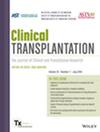Sirolimus Plus Low-Exposure Calcineurin Inhibitors as an Alternative Graft-Versus-Host Disease Prophylaxis in Calcineurin Inhibitor-Intolerant Recipients: A Retrospective Study
Abstract
Background
Graft-versus-host disease (GvHD) remains a major barrier to long-term survival after allogeneic hematopoietic stem cell transplantation (allo-HSCT). Although calcineurin inhibitors (CNIs) are the cornerstone of GvHD prophylaxis, some patients cannot tolerate them, creating a critical need for alternative strategies.
Objective
To evaluate the efficacy and safety of sirolimus plus low-exposure CNIs as an alternative GvHD prophylaxis in CNI-intolerant recipients undergoing allo-HSCT.
Methods
We retrospectively analyzed 16 allo-HSCT recipients who received alternative GvHD prophylaxis due to CNI intolerance, evaluating GvHD incidence, survival and relapse outcomes, infectious complications, and immune reconstitution.
Results
The median time to regimen initiation was 27.5 days (range, −2 to 114 days), and the median treatment duration was 53 days (range, 14–319 days). Only one patient (6.3%) experienced grade 2 acute GvHD, and none developed grade 3–4 acute GvHD. No cases of chronic GvHD were observed in the 15 evaluable patients. Over a median follow-up of 271 days (range, 58–505 days), one non-relapse mortality and three relapses (18.7%) occurred, with no relapse-related deaths. The alternative regimen was well-tolerated with manageable infections and, importantly, did not impair early T, B, or NK cell reconstitution.
Conclusion
For allo-HSCT recipients with CNI intolerance, this study provides the first evaluation of sirolimus combined with low-exposure CNIs as a GvHD prophylaxis. Our findings suggest this regimen is a promising and feasible alternative, although validation in larger, prospective studies is warranted.

 求助内容:
求助内容: 应助结果提醒方式:
应助结果提醒方式:


